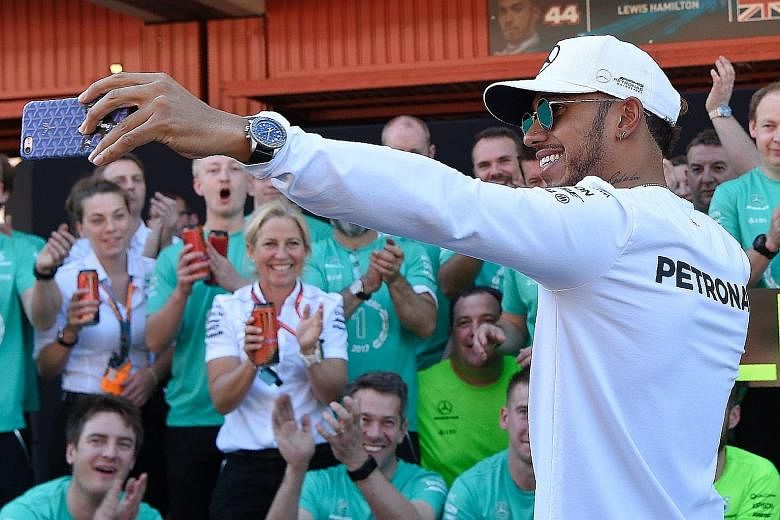For the fifth time this season, a grand prix raised as many questions as it answered. This is a great thing, because it means that Formula One is far from predictable.
As the European leg of the World Championship kicked off, everyone was desperate to know whose technical upgrades had been better: Mercedes' or Ferrari's?
There is the suspicion that Mercedes' were ever so slightly more effective, especially since Lewis Hamilton was able to catch and overtake Sebastian Vettel to take a superb victory.
But it wasn't clear-cut as several factors came into play, not least Mercedes' strategy.
After Hamilton lost the lead at the start, they elected to run team-mate Valtteri Bottas "long" on his first stint so that he could bottle up Vettel, who had pitted early from the lead for more soft-compound Pirelli tyres, and allow Hamilton to catch up even while running his mandatory stint on the slower medium-compound rubber.
That would give Hamilton the tyre advantage later when he could run softs as Vettel switched to mediums. The German complained that he lost eight seconds trying to overtake the Russian GP winner.
We will see a lot more of this sort of strategic warfare, and it can make or break a team's race.

Certainly, that little bit of legitimate gamesmanship was a big help for Hamilton, but Mercedes boss Toto Wolff also highlighted the decision to pit Hamilton under the virtual safety car (VSC) conditions arising from the collision on Lap 34 between Stoffel Vandoorne and Felipe Massa.
Mercedes waited until Lap 36, just as the message "VSC ending" flashed on television monitors and the track was going green again.
"That was the magic call," Wolff said. "We timed it perfectly. I really take my hat off to James (Vowles, the team's chief strategist) and his group of strategists."
Vettel pitted on Lap 37 for his mandatory set of medium tyres and he rejoined right alongside Hamilton, setting up their exciting clash on Lap 38. Six laps later, Hamilton got the job done on his superior rubber and went on to victory.
Pit stops always cost a lot of time, around 21 seconds. But by pitting under the VSC, the time loss may be closer to only 12 seconds since your rivals are not going at racing speed.
That quick thinking, allied with the tyre differentials that helped Hamilton, proved critical to Mercedes' success on the Circuit de Catalunya, where overtaking is always difficult. But even the best strategies don't always work out.
In Australia last year, Ferrari got the jump when both Mercedes cars lagged off the start line.
Eventual winner Nico Rosberg bided his time early on his super- soft tyres, then switched to his mandatory set of mediums when the race was red-flagged briefly.
But Ferrari unfathomably left their cars on super-softs during that stoppage, which meant that when everyone restarted on equal terms, they still had a further pit stop to make in order to run on the alternative compound.
Vettel fell to third and despite running softs for his final stint, he was unable to dislodge Hamilton from second in a race he should have won.


